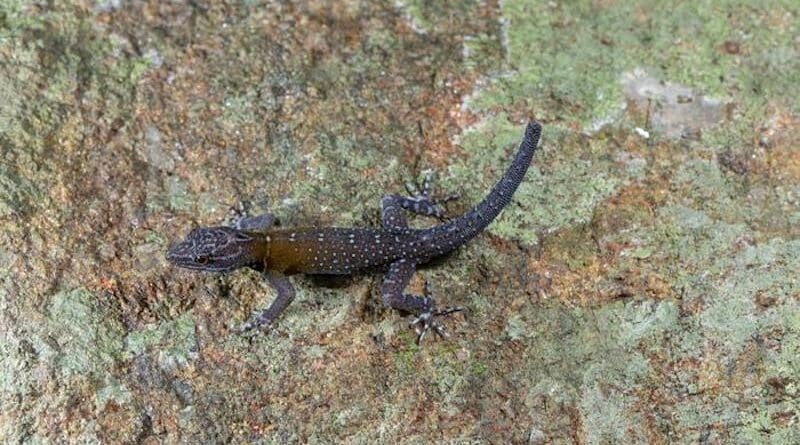Discovering Van Gogh In The Wild: Scientists Unveil A New Gecko Species
You’ve probably seen nature depicted in art, but how often do you see an artwork hiding in nature?
When they saw the back of a lizard in the Southern Western Ghats, a group of scientists from the Thackeray Wildlife Foundation in India were reminded of Van Gogh’s The Starry Night. As soon as they figured out it was a new species, it was only apt to name it in honour of the famous painter.
“Cnemaspis vangoghi is named for Dutch painter Vincent Van Gogh (1853–1890) as the striking colouration of the new species is reminiscent of one of his most iconic paintings, The Starry Night,” explains Ishan Agarwal, who took part in the study to describe the new lizard. Males of the species have a yellow head and forebody and light blue spots on the back and they live among rocks and occasionally buildings and trees.
Together with his fellow researchers Akshay Khandekar and Tejas Thackeray, they found the new species during an expedition in April 2022 to the the Southern Western Ghats in Tamil Nadu, India. Now, they have published their findings in the peer-reviewed journal ZooKeys.
“Tamil Nadu is an exceptionally biodiverse state and we expect to name well over 50 new species of lizards by the time we are done [with our expeditions]!,” Ishan Agarwal says.
“I also had more than 500 tick bites during that summer trip, with the highest densities in the low-elevation, dry forests of Srivilliputhur, where the new species are found,” he adds.
Cnemaspis vangoghi is a small-sized gecko that can reach 3,4 cm in length. It was described as new to science together with another species of its genus, Cnemaspis sathuragiriensis, named for its type locality the Sathuragiri Hills.
“The two new species are distributed in low elevation (250–400 m asl.), deciduous forests of Srivilliputhur, and add to the five previously known endemic vertebrates from Srivilliputhur-Megamalai Tiger Reserve, Tamil Nadu, India,” Ishan Agarwal explains. They are diurnal and mainly active during the cool hours of the early morning and evening, found largely on rocks. So far, they have only been found in very restricted localities, “an interesting case of micro-endemism in low-elevation species,” he notes.

